





By Isabella Erwin STATESMAN REPORTER
President Donald Trump’s first month in office was largely defined by his sweeping cuts and freezes to federal programs.
At the National Science Foundation, an independent federal agency which supports science and engineering research, over 10% of employees have been fired, as reported by the New York Times. While 84 probationary workers have been reinstated after a court order, universities across the country watch as challenges continue to make their way through the federal court system.
“I’ve been here 26 years. This is the singularly most stressful period for research,” said Lisa Berreau, vice president for research at Utah State University.
The National Institutes of Health, another independent agency and the largest source of medical funding in the world, according to its website, announced it would cap indirect costs funding at 15% of total awards. This marks a “radical change,” according to Berreau.
“For about the last four years, Utah State has had an indirect rate of 46% with the federal government,” Berreau said.
Indirect costs, which are used by the university to maintain buildings and facilities where research is conducted, are a major way the federal government subsidizes higher education across the country, according to Berreau.
For conservatives, these cuts are generally seen as necessary steps toward eliminating waste and fraud in government spending.
“Any federal funding that is frozen by the Trump administration is [aimed toward eliminating] a waste of taxpayer dollars,” wrote Chayse Leavitt, president of the USU College Republicans, in an email to The Utah Statesman.
“If there’s concern about appropriateness of spending, there are mechanisms by which programs can be reviewed,” Berreau said. “The changes that are happening in staffing at the federal level right now are not being done in a way that is a careful review process.”
Medical research in particular is threatened by recent layoffs and cuts, according to Berreau.
“Utah State University does some wonderful fundamental research, particularly through entities such as our antiviral institute. We are on the front lines, helping to develop the best new approaches for handling viral agents,” Berreau said.
Many supporters of these federal actions have favorable opinions about the impact of research at universities.
“Research is critical to the flourishing of society; therefore, I fully support research being conducted at USU and universities across the country,” Leavitt wrote.
Berreau said the impacts of a decrease in research might not be felt for some time.
“The public may not see them yet, but they will,” Berreau said.
USU is hosting weekly Zoom sessions for faculty to discuss changes in federal policies, according to Berreau.
“I would say that across the country, leaders of research are deeply concerned that these rapid changes are something that have the potential to have profound effects on our ability to support research on our campuses,” Berreau said.
Berreau said USU brought in over $160 million in awards for research last year, making up a large part of the university’s overall funding.
“Those sponsored awards mean jobs for individuals,” Berreau explained. “They mean jobs for students. They mean outcomes in terms of research — outcomes that benefit the public.”
The USU Office of Research is watching developments in other agencies and departments as well.
Berreau said she was specifically concerned about how cuts to the U.S. Department of Defense could impact funding toward USU’s Space Dynamics Laboratory, a program she called a “shining star for research in terms of contributions to national defense.”
“This indirect cost recovery that we get right now — it’s only announced for the NIH, but we could anticipate that going across all federal agencies,” Berreau said.
Berreau stressed the decrease in research funding would impact the entire university, not just researchers.
“I think students should understand that this is not something that will just happen at the high levels of the university and it won’t have an effect on them,” Berreau said. “It will have an effect on our ability to be the kind of research environment we want to be for our students.”

Isabella Erwin is a sophomore studying journalism with a minor in political science. When not busy with a new project, Isabella can be found listening to some indie rock and playing way too much “Balatro.”
— isabella.erwin@usu.edu

By Bailey Daniels STATESMAN REPORTER
Sleeping bags littered the floor of Utah State University’s Jon M. Huntsman School of Business on the night of Feb. 28. Participants from across Utah came together for a 24-hour “hackathon” called HackUSU. The coding competition invited college students, recent graduates and high school seniors and to try their hand at a variety of categories.
Beginners and more experienced coders alike participated in the cybersecurity, hardware, game development, hacking the planet, AI & machine learning, datathon and sports analytics categories.
In addition to the competition itself, sponsors such as USU’s Space Dynamics Laboratory and AT&T were available for networking opportunities. Speakers presented on an array of topics from cybercrime to AI.
Duke McFarland is a computer science major from Utah Valley University who competed in HackUSU for the first time. His team was in the hacking the planet category of the competition.
According to huntsman.usu.edu, this category aimed to “tackle social challenges by creatively using technology to foster positive change, improve communities, or address global issues through innovative solutions.”
Despite the name, literal hacking is not involved.
“We created a website — just something that connects people to resources for food and resources for help and assistance in their local areas,” McFarland said. “I think it’s fun — a cool experience. I met cool people that I didn’t know before. Expanding my knowledge, I learned a new coding language I didn’t know before.”
Each team consisted of one to four participants and needed to have their project completed before judging began at 2 p.m. on March 1. $17,000 in prizes were awarded, including a $5,000 grant fund and Nintendo Switches.
“I had lots of fun building an actual product. I plan to come back next year,” McFarland said.
Chelsea Harding is a USU instructor in the data analytics and information systems department. She has been running HackUSU since 2019.
“HackUSU helps inspire students to create and build,” Harding wrote in an email to The Utah Statesman. “It gets them out of the slump of general education and gives

them the space and environment to chase their dreams.”
The judging portion of the event allowed competitors ten minutes to present their projects. The criteria includes how technically impressive and well designed projects were, how well they worked and if the teams tried something new.
“Projects ranged widely. One built an echolocation device that a person could wear and could potentially help a blind person to have awareness of their surroundings,” Harding wrote. “Another built visualizations that helped to coordinate satellites orbiting in space and how they synchronize up.”
According to huntsman.usu.edu, the game development category urged participants to “unleash [their] creativity and build a unique, playable game during the hackathon. Impress the judges with innovative gameplay, captivating design, and an unforgettable player experience!”
One team consisting of USU students tried their hand in this category, but things didn’t go as planned. One of the team members was computer science major Matt Schnubel. Their project was a tank game.
“Our original idea was that each player gives a prompt to AI and it kind of determines what that strategy is,” Schnubel said. “Then there would be five or six tanks that were going to be on each of the sides that would go off those strategies. Last man standing wins.”
Despite working all night on their game, it didn’t end up working as they had hoped. Tanks drifted aimlessly around the screen. Although he didn’t turn anything into the judges, Schnubel still regarded HackUSU as a good experience and plans to return next year.
Harding explained the event has grown steadily over the years, starting out with under 300 participants from USU and UVU. This year, almost 600 participants attended, from students to sponsors.
Winners of the datathon category were Shreeya Maskey, Arogya Upadhyaya, Makenna Worley and Nicolas Van der Werf, who created a web visualization platform. The winners of the AI & machine learning category were Doyoung Yoon, Taehoon Kim, Jiwoong Kang and Jonghyuk Lee, who built an AI-generated storytelling software for children. In sports analytics, Brooklyn Monson, Emma Nebeker, Lydia Wright and Emma Deberard took first place through analyzing Mountain West Conference football data to see how factors impact game outcome.
“I love the creative spirit of a hackathon. There is something so energizing about telling someone, ‘You have 24 hours to see what you can build,’” Harding wrote. “The fear of failure flies out the window and people give themselves the chance to really work at an idea or project that they’ve had but never chased after.”

Bailey Daniels is a junior studying technology systems. She loves Lana Del Rey, sweet treats and all things whimsical.
— bailey.daniels@usu.edu

By Malory Rau STATESMAN REPORTER
On March 4, Utah State University Interim President Alan L. Smith and USUSA President Matt Richey announced a 3% increase in tuition and several increases to student fees at the Truth-inTuition hearing held in the Evan N. Stevenson Ballroom in the TSC.
These increases come from various needs across campus. Aggie Shuttle is requesting an increase of $1.73. The music and theater departments are receiving a total fee increase of $3.30.
USU will continue to remain one of the most expensive schools in the state with this increase, alongside the University of Utah and Westminster College.
According to Smith, these fee and tuition increases, which have been approved by the USUSA Executive Council and the student fee board, are not set in stone until they go through the Utah System of Higher Education board on March 17.
Smith explained where certain tuition increases stem from.
“Every year, the legislature determines the rate that state employees will receive, and in the case of higher education, we don’t get 100% of that amount. We get 75% of the amount, and then we’re expected as an institution to cover the rest of that, so that typically will go into the tuition request,” Smith said.

The event was broadcast for statewide campuses to participate. Students were invited to attend and encouraged to ask questions, although there were no student fee increases to statewide campuses.
One fee discussed for the Logan campus was the $3 fee increase for the Student Nutrition Access Center, also known as SNAC. The fee was voted for by the student body in the most recent USUSA elections cycle and passed with a 75.06% vote. SNAC requested the fee increase to grow the variety of foods they offer to students.


Malory Rau is a junior studying journalism with an emphasis in social media. You can often find her listening to SZA or reviewing films on Letterboxd.
— m.rau@usu.edu





By Alici Archibald STATESMAN REPORTER
The Utah State University Facility Enhancement Committee met on Feb. 10 to discuss how to fund enhancement requests made with the allotted $200,000 budget.
The committee is composed of Executive VP Brooklyn Ward as chair, six USUSA senators, the USU Facilities Planning, Design, and Construction architect, USU classroom technology & media productions project coordinator and the USU Student Involvement and Leadership Center associate director. The $200,000 budget is directly funded by tuition.
Among the most notable enhancements requested is an update to the research kitchen in the C. Anthon Ernstrom Nutrition and Food Sciences building. In an email, College of Agriculture and Applied Sciences Senator Dantzel Miner wrote to The Utah Statesman, “I know an update in the NDFS Research Kitchen will benefit students by enhancing their learning environment and giving them more modern appliances that are used more often in the current industry.”
The research kitchen contains all of the equipment required for preparation and service for 50 individuals per day. The space includes a preparation area, dishroom, walk-in cooler, walk-in freezer, dry storage, office, dining area and changing facilities for staff.
Equipment in the kitchen includes a 31 cubic foot refrigerator, microwaves, blenders, electronic balances, Cryovac, tray lidder, meat slicer, food processors, an induction cook-top, two combi-ovens, blast chiller/ freezer, a twenty-quart mixer, dishwasher, dish dryer and an ice machine.
The request for the kitchen states the facility is outdated. Their specific request was to have the kitchen gutted and renovated with updated equipment and a new HVAC system. The estimated cost was determined to be $31,360. “I’m most excited about increasing the sanitary practices and eliminating bugs or other contaminations caused by outdated structures. I think it is important because we should continue to practice what we preach. The students are learning about best practices in the Nutrition world but with these kitchens and outdated spaces we’re not always able to practice what is learned,” Miner wrote.
Another sizable request included the addition of a Wenger practice room, estimated to cost approximately $77,479. This space would measure 13.2 by 13.2 feet and fit eight people instead of one. The new room would also feature full audio sound proofing and a new Steinway piano.
In an email, CCA Senator Lauren Tougas wrote to the Statesman, “The students of the Caine College of the Arts

have been in desperate need of more practice/rehearsal space for a little while now and this new practice room will not only afford them a new location in which to effectively practice their respective instruments and hone their craft, but also a new venue in which multiple musicians can practice at once- a location for concert and recital rehearsals, which up to this point we have lacked.”
The request stated this room would enhance the rehearsal and practice capabilities of the college by accommodating both individual students and group rehearsals. It claimed the high-quality environment, superior acoustics and flexibility will offer an optimal setting that meets the needs of diverse performance disciplines for both practice and collaboration.
Several requests concerning facilities at the Junction were considered this year, which were aimed at improving accessibility for customers.
The Junction is a dining hall on central campus that serves a large percentage of USU students daily. Requested improvements involve bike racks estimated to cost $500, accessible doors estimated to cost $8,300 and sidewalk repairs estimated to cost $4,000.
Facilities enhancement requests are completed by students, staff and faculty at USU. The fund aims to
provide financial assistance to renovate, expand or upgrade safety for recreational, cultural, educational or other related public-use community facilities at USU. The purpose of this fund is to provide students with direct input into decision-making regarding facilities needs.
“We value the opportunity to show our students that their success is at the forefront of our minds and mission. We want them to feel as though they have every available opportunity afforded to them,” Tougas wrote.

Alici Archibald is a junior studying journalism who loves all things related to news. She can be found playing the trumpet in the Aggie Marching and Pep Bands, watching sports or listening to one of her many political podcasts.
— a.archibald@usu.edu
By Esther Owens STATESMAN REPORTER
Growing up in Cache Valley, Carson Field cultivated a passion for the outdoors. Eventually, this led him to found Naomi Market, an outdoor gear consignment shop.
The name was inspired by Cache Valley’s Mount Naomi Wilderness, where Field spent time exploring as a kid. Field observed a gap in the gear industry, despite outdoor recreation’s popularity in the valley.
“That was where a lot of the inspiration came from,” Field said. “Feeling like there was a lack of good options for cheap gear and an alternative to buying new from a big commercial store.”
Field started as a student in Utah State University’s outdoor product design and development program but stepped away to focus on his vision of starting Naomi Market in January 2024.
“There wasn’t anything I was dying to do design-wise,” Field said. “So, I was like, ‘I guess I’ll just take the idea of affordable gear and a consignment shop and things of that nature and make it real.’”
The shop offers gear for every type of outdoor enthusiast — skiers, climbers, hikers and more. Anyone who has gear with some miles left on it can drop it off during business hours and become a consigner.
“I’ve tried to keep it really quite simple,” Field said. “I’ll sort through it just to make sure it’s in the correct realm of what we’re dealing, but as soon as we’ve done that, it’s as simple as an online consigner contract — a readthrough of all the nitty gritty details.”
Consigners have an online portal where they can view their inventory as their items get sold and receive a payout once per month.
According to Field, most outdoor gear is designed to last and have a second life. By selling used gear, the shop promotes sustainability and accessibility.
“It makes it a lot more streamlined to get quality gear that you know is going to give you a good experience in the outdoors,” Field said. “It’s a good alternative to be a little more conscious about gear, keeping it in the system and cycling through some different hands, and a cheaper alternative for people to get out in the outdoors.”
Carson’s mother, Lorinda Field, is a business owner herself and has enjoyed watching her son create something of his own.
“He’s always been interested in the outdoors and thrifting, so this perfectly came together in that sense,” Lorinda said. “He consulted with me a little bit about how I had gotten started, so I just shared some of that info with him.”
The shop operates out of the front room of Carson’s parents’s house, which he has converted into a store front, the same room Lorinda started her business out of.
“Because real estate is so expensive, and sometimes when you have an idea, you don’t know if it’s going to take off or not, it’s a safe way to start, and then once it grows, it’s a little easier to move on to better space,” Lorinda said.
Carson’s goal is to move the shop downtown this year.
“We’ve got some seemingly solid stuff lined up,” Carson said. “It’s headed in a good direction. We should be hopefully getting downtown in the next few months.”
Naomi Market is currently located at 2476 N 800 E, North Logan. More information about products and consigning can be found at naomimarket.ricoconsign. com.

Esther Owens is a sophomore studying journalism. When she’s not busy working on a story, you can find her at the climbing wall.
— esther.owens@usu.edu
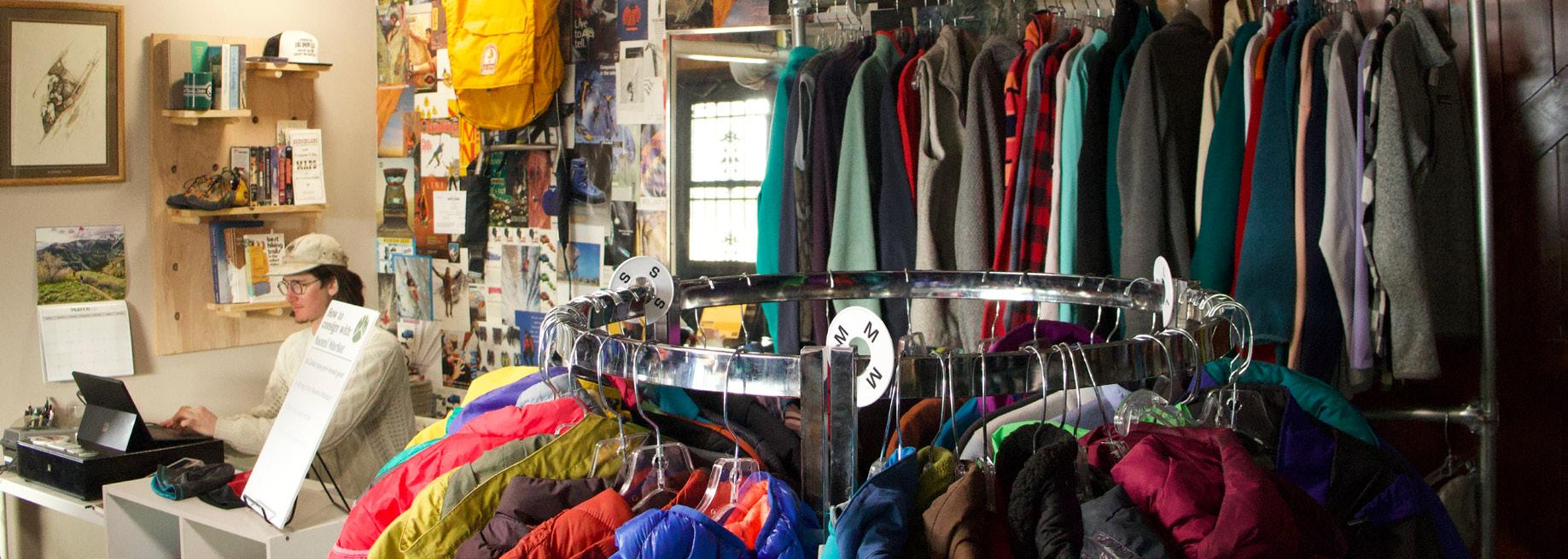


“CJ’s DJ Show” with Chloe Malmborg is your dad’s favorite radio show, featuring the greatest songs ever written, new themes each week and the best, most humble DJ that Aggie Radio has to offer. Tune in to 92.3 KBLU every Wednesday at 2 p.m.
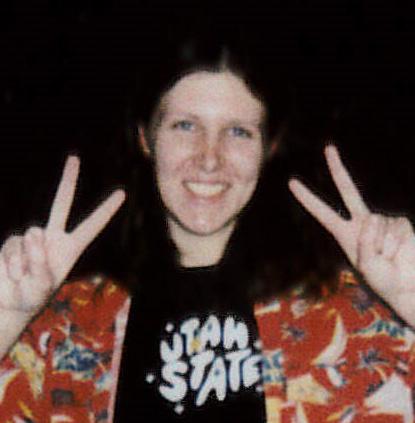
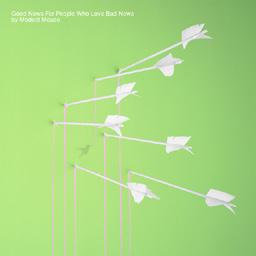

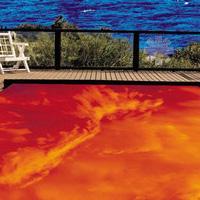

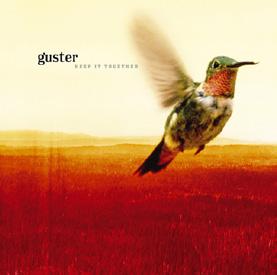





By Sicily Clay STATESMAN REPORTER
If Utah needs to sidestep a major, deadly fire, Utah State University will play a crucial role.
The Utah Forest Restoration Institute, housed in USU’s S.J. & Jessie E. Quinney College of Natural Resources, was launched using state funding in 2024 to synthesize science on forest health, develop a resource hub, monitor vegetation shifts and train students in modern practices. It emphasizes curbing the escalating fire threat through research and teamwork with state and federal agencies.
“Fire is a natural part of our ecosystems, and without that regular fire, we’ve had a lot of changes to our forests,” said Larissa Yocom, director of UFRI.
Wildfires burned 8.9 million acres across the U.S. last year, a figure reported in a Feb. 2 Statista publication, marking a more than threefold increase from the previous year. In Utah alone, state data shows 50,170 of those acres were scorched.
“We have a century of fuel buildup in our forests because we’ve been suppressing fire for decades when, in fact, most of our forests are fire-adapted,” Yocom said.
Utah saw 961 fires in 2024, of which 57% were human-caused. Logan’s hillsides remain among the most vulnerable areas in the state.
“Sometimes people don’t like to hear about it, but climate change is another big thing,” Yocom said. “Even if we didn’t have that buildup of fuels, we also have hotter, drier seasons, and something that’s just indisputable is that our fire seasons are getting longer.”
The unpredictability of wildfires only heightens the fear they inspire.
“No city is safe from wildland fire,” said Robert LaCroix, assistant chief of fire operations for the Logan City Fire Department.
LaCroix, who brings 33 years of experience battling blazes from California to Utah, was “on the initial attack” of the 2018 Paradise fire, which killed 85 and became the deadliest forest fire in a century. After moving to Utah four years ago, he now leads firefighting efforts in Logan.
Yet, beyond the immediate terror of flames, Utah faces deeper, more complex issues regarding its fire-prone landscapes.
“We have challenges, including understanding exactly what management tools we can use in some of our forests in Utah,” Yocom said. “They’re different than states around us.”
She pointed to the delicate balance of implementing solutions like prescribed fire — a valuable tool that mimics natural burns but often unnerves the public.
“How do we increase public support for prescribed fire, which tends to make people nervous?” Yocom said. “Or for land management agencies doing more thinning? Taking some trees out — that could help — but people sometimes don’t like to see that in their forests.”
Air quality adds another layer of difficulty. “Smoke from prescribed fires is bad for vulnerable populations,” Yocom noted, highlighting the trade-offs that complicate these efforts.
This is where UFRI steps in, offering a path forward through collaboration and open dialogue.
The initiative serves as a hub for federal agencies like the U.S. Forest Service, state bodies such as the Utah Department of Natural Resources, tribes, counties, landowners and local fire services.
“It’s a really good chance to bring people together in a more organized way to not step on any toes but to facilitate what others are already doing,” Yocom said. “Lots of people are really doing neat, awesome, necessary work already. So, how can we add to it?”

With an April meeting planned to align these groups, UFRI aims to join the Southwest Ecological Restoration Institutes network — alongside Arizona, New Mexico and Colorado — through U.S. Senate Bill 457 and Utah House Bill 1045.
The Logan City Fire Department is among those eager to partner with UFRI.
“I’m excited they got the funding and that it’s here at Utah State in our backyard, and we are excited to collaborate,” LaCroix said.
He emphasized the value of this local resource for his team, noting the department is looking forward to tapping into UFRI’s expertise and training opportunities to bolster their efforts against the growing wildfire threat.
However, firefighting alone can’t address the root causes intensifying these blazes.
“A lot of people don’t connect to this, but it’s integrally connected — climate change,” said Patrick Belmont, USU hydrology professor. “Every bit of carbon pollution put in the air from now makes the wildfire problem worse.”
In a Feb. 5 Salt Lake Tribune piece following the Los Angeles fires, which killed 29 and destroyed over 16,000 structures, Belmont stressed the urgency of this link.
“I know that’s a super polarized term now, but that can’t be a reason not to talk about it,” Belmont said. “Climate change is complicated, but what it boils down to is we’ve got to get the fossil fuels turned off as quickly as possible.”
Yocom expressed gratitude to the Utah Legislature for recognizing wildfire’s urgency with funding that launched UFRI.
“They’ve decided this is a priority,” she said, highlighting their commitment as a driving force behind the institute’s mission.
UFRI aims to tackle fuel buildup and public perception gaps.
“That’s one of our top priorities,” Yocom said. “Making sure that we are focusing not just on our ideas of what needs to happen but really listening to everyone else too.”
As wildfires grow fiercer and more frequent, UFRI invites Utahns to confront the unknown together, turning fear into informed resolve.
“Being very clear about how to not make the problem worse moving forward — we need a lot more communication,” Belmont said. “My hope would be that it continues to pull together a wide variety of people, not just foresters, not just wildfire people per se, but the wildfire problem is linked to all these other problems.”
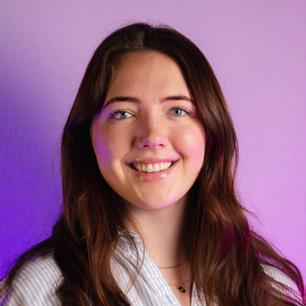
Sicily Clay is studying journalism and marketing. When not crafting content, she can be found chasing sunrises.
By Brook Wood STATESMAN REPORTER
Utah State University Outdoor Programs is gearing up for spring as student trip leaders prepare to lead all-inclusive outdoor trips that cut costs dramatically for participants.
Anna Rupper works for OP and has both participated in and led various trips.
“We’ve got a lot of overnight trips coming up,” Rupper said. “We’re kind of transitioning to more springtime trips.”
A few upcoming trips towards the end of March and the beginning of April include cross-country skiing, Capital Reef camping and hiking and Lake Powell kayaking.
Rupper emphasized the benefits of using outdoor trips as a way to learn new things which are difficult to learn alone and require a level of safety knowledge.
“I’m leading the backcountry ski trip,” Rupper said. “Those are really awesome for people who know how to ski and have wanted to get into the backcountry but might not have the know-how or the gear.”
Student leaders are in charge of planning what to bring and keeping everyone safe. OP provides everything a participant needs on the trip, like gear, food and transportation.
“That’s usually camping gear and then whatever specific gear you would need for the activity, like a mountain bike or climbing harness ropes and everything,” Rupper said.
Outdoor trips are a great way to meet new people and form new connections, according to Rupper. She described seeing friendships form and last over the years through her experiences on outdoor trips.
“If you’re afraid to try something new, or if you don’t have a way to get into a new sport, they’re all very beginner-oriented,” Rupper said. “If you’re trying to learn how to climb, you


have people that are there and are trained and can teach you how and then a group of people that are probably around the same level as you that you can become friends with and form that community with.”
Clayton Shaw is the OP climbing student manager and an outdoor trip leader.
“We have a backcountry skiing trip to a yurt, we have a canoeing trip to Labyrinth Canyon and we have two trips to Moab — one is mountain biking, and one is rock climbing,” Shaw said.
Outdoor trips are a great way for students to experience something new and meet people who have similar interests, according to Shaw.
“I have been on trips where nobody knew each other going into the trip,” Shaw said. “Coming home from the trip,
Q: What is your role within the USU Writing Center?
everybody all of a sudden had a climbing partner that they could go climbing with.”
Shaw emphasized how outdoor trips are a great resource for students, not only because of the low costs but because it grants them access to new knowledge and skills that would be more difficult to acquire on their own.
“These trips lower that barrier of entry because we operate them on a break-even basis, which means we make them as cheap for the students as we possibly can, and then they also get the instruction on how to do so safely versus if you were to do it by yourself,” Shaw said.
The location and dates for many of the scheduled outdoor trips are recurring each year, but each trip is implemented differently by the student trip leader team.
Rupper and Shaw emphasized the importance of students seizing the opportunities these outdoor trips provide.
“It’s a super good resource for the school,” Shaw said. “I didn’t know very much about it until I started working here, and so I didn’t take advantage of it as a student. I’ve just been kind of benefitting from it as an employee. If I had known more about it as a student, I for sure would have signed up for some trips.”
Details and more information about these trips can be found at usu.edu/campusrec/outdoor/.
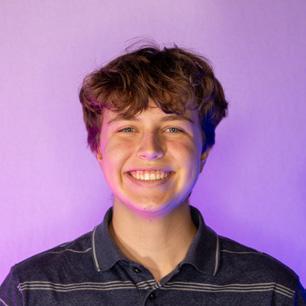
Brook Wood is working towards receiving a bachelor’s degree in literature. When they aren’t writing or reading, they enjoy playing the violin.
— b.wood@usu.edu

To nominate someone who exhibits ATCA principles, email life@usustatesman.com.
A: As writing center tutors, basically our goal is to hold one-on-one sessions with students and just help them get a better idea of how they want to write their writing. We help with a lot of things when it comes to writing, like researching, brainstorming, outlining, learning how to write different types of essays, learning different types of skills when it comes to writing or just getting people in contact with resources that are helpful.
Q: Which ATCA principles align with the work you do?
A: Definitely human dignity and respect — understanding that everybody has inherent value, that their words are super important and valuable to the process and letting students decide how their writing is going to function is so important because we don’t know everything and we shouldn’t pretend to.
Q: How do you think your work impacts the Aggie community?
A: Our function is helping people realize that there is value to their words and helping them achieve their own personal goals by being there for them. Everybody comes in with these really important experiences and voices, and I think the main thing that helps students is just having somebody to validate them and be able to ask them questions without fear or shame.
Q: Can you provide a specific example when you or someone on your team demonstrated ATCA principles?
A: I had somebody who came in and shared a really difficult time in their life and wanted to use that to help the greater good of the community. It was a really impactful piece. In sessions like that, it is so important to just be open and be kind. The person who came in seemed really confident, but the more we talked, I realized how terrifying it is to share those personal experiences with a stranger — many people will never have a kind person to talk their experiences through. I think the respect and dignity for all people was something I hadn’t even realized how important it was in the situation until then.

By Lacey Cintron STATESMAN REPORTER
The Russell/Wanlass Performance Hall came alive with the soothing sounds of jazz music on March 4 as part of Utah State University’s Guitar, Bass & Drums Festival.
The rhythmic beat of the drums and the low, swinging bass lines of the guitar permeated the air as attendees came to listen and learn from drummers Danny Gottlieb and Ofri Nehemya, bassists Mark Egan and Alexander Claffy and guitarist Yotam Silberstein.
“These are five of the top musicians in their field, many of them coming from New York City,” said Corey Christiansen, guitar program coordinator in the USU department of music.
The day-long festival featured a series of masterclasses, panels and workshops focused on musicianship, culminating in a final jazz concert.
“We had a drum, bass and guitar workshop and a couple of Q&A sessions,” Christiansen said. “The students really got incredible instruction from some of the best guys in the world.”
The festival began in 2018 when Christiansen sought to highlight instruments within jazz bands often go overlooked but are nonetheless crucial to the piece.
“When you have a jazz area of study at a university, the big band there will typically bring in guest artists and do something like this,” Christiansen said. “It’s really easy for a big band to bring in a saxophonist, a trumpeter or a trombonist because they fit in really well as a soloist, but the rhythm section often gets neglected.”

Alongside associate professor of professional practice Braun Khan and associate professor of percussion Jason Nicholson, Christiansen turned the festival into an annual tradition at USU.
“I thought this would be an incredible thing if we could start a festival just focused on the trio — the guitar, the bass and the drums,” Christiansen said. “We could bring in guest artists that could really help and inspire our students and show them what level they can attain when they put in the right kind of work.”
Bigger areas such as New Orleans and New York are entrenched in jazz and are often premier spots for aspiring
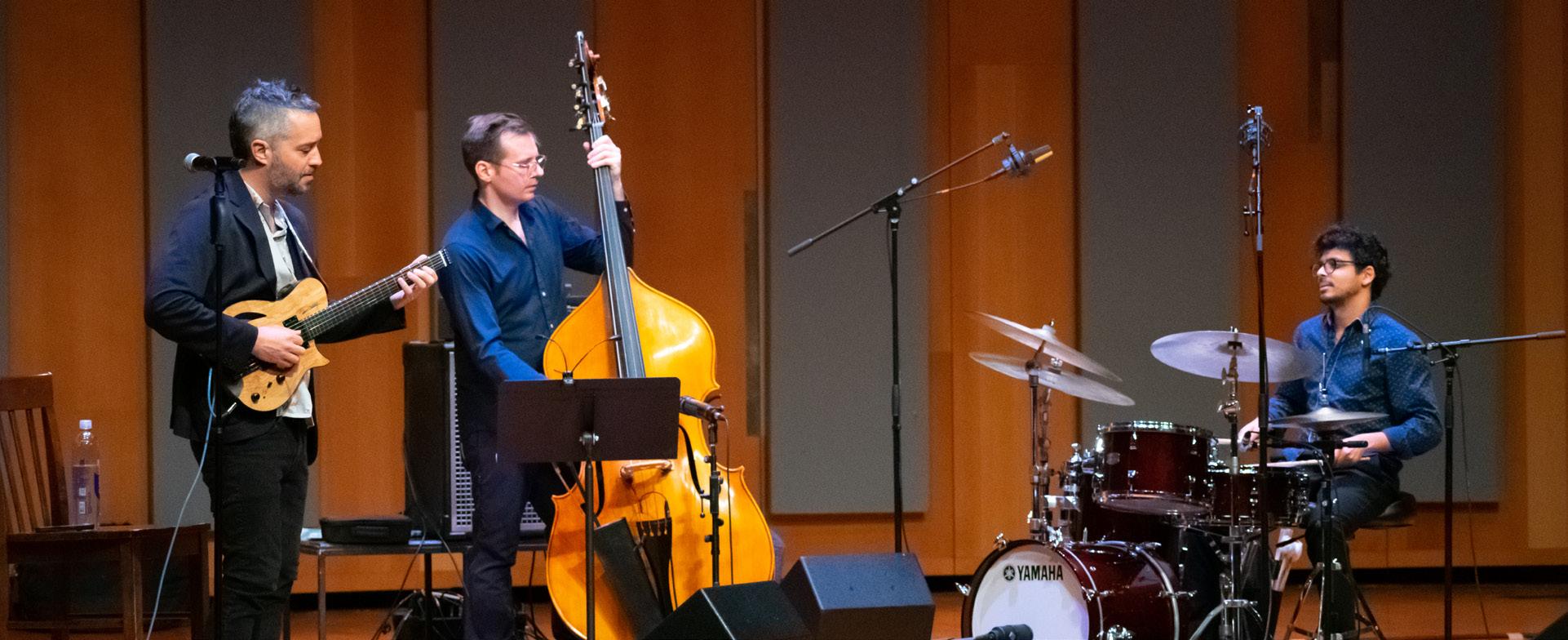
jazz musicians. For cities like Logan where jazz is less popular, events like the festival are crucial to keeping the jazz scene alive.
“Sometimes being at a place like Logan — it’s different where you’re not near a metropolitan area,” Khan said. “Doing a festival like this gives us an opportunity to bring that jazz world to Logan and give students a chance to interact with these musicians where they might not otherwise be accessible.”
Jazz is considered difficult to define, in part because there are over 30 subgenres. Regardless, it has been recognized as a major and rich form of musical expression in traditional and popular music.
“I love everything about jazz,” Christiansen said. “I love the way the music feels, the pulse and rhythm of the music, the harmonies and the chord progressions. There’s an element of improvisation, and with improvisation, there’s an element of indeterminacy.”
According to Jazz Observer, jazz music originated in New Orleans in an area dubbed Congo Square — a place of reprieve where enslaved and free people of color could safely gather and engage in song and dance. Born from a blend of Creole culture, West African traditions and Cubanstyle rhythms, jazz music would characterize the Roaring ‘20s with its lilting cadence and dynamic improvisations.
“Jazz is sometimes considered America’s classical music because it’s a uniquely American genre,” Khan said. “It’s one of the few styles that involves a lot of improvisation, and there’s something really natural about the idea of improvising.”
Jazz is often a blend of composed music and improvisation, creating entirely unique pieces of music driven by spontaneity and purpose. For Khan and Christiansen, jazz is similar to conversation.
“It’s kind of like the difference between having a conversation with somebody and giving a prepared speech,” Khan said. “There’s something much more organic about interacting in an impromptu conversation type of way, and jazz has that same format built into it.”
One of the main goals of the festival is to inspire attendees — especially students — through the musicianship of its guest artists.
“They’re seeing incredible musicians playing music they’re studying at the highest level,” Christiansen said.
“Having guest artists on campus can give students a lot of hope. Every one of these musicians went to school for music, and students realize they’re on the same path that some of these heroes were on.”
According to Christiansen, mentorship and observation are one of the best ways for aspiring musicians to grow.
“Find older, experienced musicians and just learn everything you can from them,” Christiansen said. “Surround yourself always with people who have more experience than you and ask good questions.”
For educators and artists in the music industry, building a network and witnessing the musicality of others can make all the difference in booking the next gig or nailing the final measure.
“I also benefit just from learning from these guys who come in, no matter the genre,” Christiansen said. “As teachers and professors, we get a lot of benefit because we’re learning also.”
The connections formed at concerts and festivals such as these have forged a small yet tight-knit community in Logan with a shared passion for music and performance.
“The jazz world is not that big — the longer you’re in it, the more you realize you’re all connected in different ways,” Khan said. “It’s nice to be reminded of that broader sense of community we’re all a part of.”
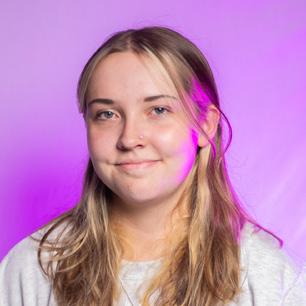
Lacey Cintron is majoring in psychology. She loves learning about the human mind, sharing stories and napping.
— lacey.cintron@usu.edu
By Rain Schenck STATESMAN REPORTER
Those keeping up with Utah State University Men’s Tennis on Instagram might’ve done a double take seeing some of their recent reels rack up thousands, even millions, of views.
The secret behind the success is the team’s recent collaboration with @tenniscoachconorcasey, a social media influencer known for blending tennis education with comedy on Instagram, TikTok and YouTube. With over 86,000 Instagram followers, Casey teamed up with the USU team to create a series of lighthearted, college tennis-themed reels.
Casey isn’t a coach at USU. He doesn’t live in Logan either. Currently residing in Toronto, Casey flew out for a weekend a couple of months ago to film content with the tennis team.
The collab may seem out of the ordinary, considering the usual visibility the team gets on social media, but for head coach Aaron Paajanen, it all started in Los Angeles.
Paajanen and Casey met in 2012 while coaching youth tennis at a summer camp in Marina del Rey. Casey was acting and writing at the time and using tennis coaching to supplement his income. The two hit it off and quickly became great friends.
“Aaron and I started making comedy skits that involved the kids,” Casey said. “We found that as soon as we included the kids in the videos, they would behave.”
What started as something done to “kill time,” Paajanen said, turned into motivation for those kids. Fast forward to fall 2024, the two messaged back and forth, joking about making those funny tennis videos again, but this time with Paajanen’s college tennis team.
“At first I wasn’t really sure about it,” Paajanen said. “The more conversations we had, the more sense it made.”
Deciding to give it a try, Casey flew out from Toronto to Logan and spent a weekend filming content with the Aggies. After exploring campus and even attending an Aggie football game, Casey was off back to Toronto. Over the last few months, the content they filmed together has been slowly released.
“It’s been awesome for the guys,” Paajanen said. “He gives them exposure.”
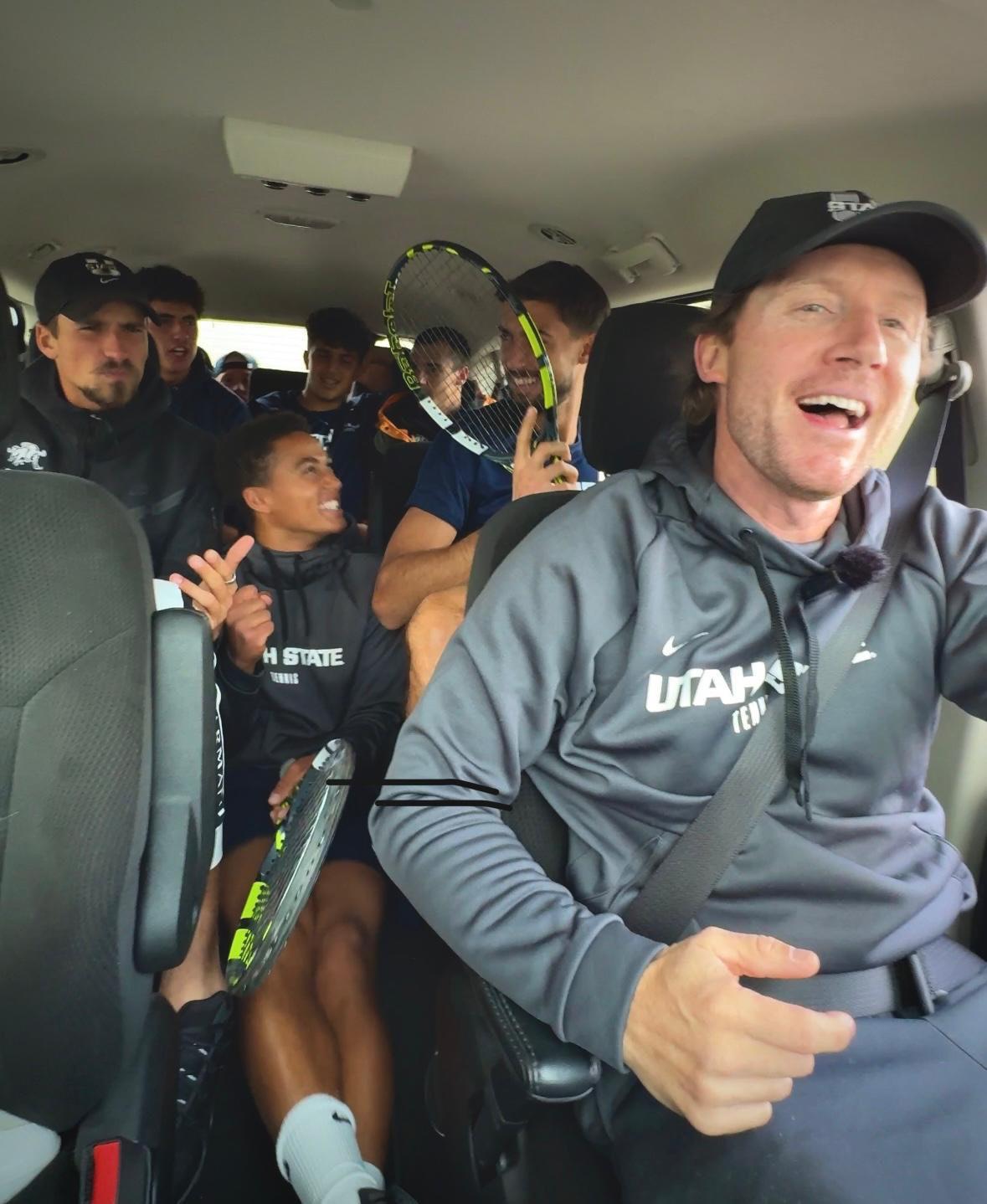
This surge in exposure for Aggie tennis has attracted aspiring tennis players eager to join the team while also boosting the players’ social media followings. Some team members have even landed NIL deals, turning their success online into real opportunities.
Although plenty of online coaches and sports media influencers dot the internet, he brings something a lot of them don’t to the table, Casey said: “Balancing that educational factor with the comedy factor.”
Those two things have created a successful channel for Casey, so much so that the USU players were approached at a tournament in Arizona a few weeks ago by people who had seen their videos on social media.
“Whether they realize it or not, people in their community know who they are,” Paajanen said. “And now, that community’s grown a little bit because of social media.”
Whether they realize it or not, people in their community know who they are, and now, that community’s grown a little bit because of social media.” — Aaron Paajanen
Besides the exposure, Paajanen said creating videos of this nature helped to bond the team together, unifying them while also providing an avenue for them to be funny around each other for the sake of a video.
“Tennis is such an individual sport,” Casey said. “You get this amplified feeling of loneliness.”
Casey continued, saying it’s important to help players feel where they belong on the team and amongst each other.
Though Casey’s online presence may be outwardly comedic, his persona goes beyond the jokes.
“I want to be the coach I needed when I was struggling,” Casey said.
“Military coaching” is often seen as the best way to run a team nowadays, Casey said, but promising comedy evokes greater emotion and trust out of the players. His ultimate goal is to make the players feel seen and heard.
“It’s incredible that a guy that doesn’t know these eight players, within a few minutes, just everybody’s just hysterically laughing,” Paajanen said on Casey’s relationship with the players during filming.
The hype these videos have created is something Casey and Paajanen would like to continue, with talk of having Casey fly out again sometime this fall.
With the world of college tennis influencers being relatively small, there’s plenty of room to grow in this niche field.
“We’re blowing up the college world,” Casey said. “College tennis is where the energy is at in our sport. On a global nature, tennis gets this rap of being this individualistic global sport, but the whole world comes to America to play college tennis.”
Although Casey does some other social media content with other tennis teams, he made it very clear Utah State was his “O.G. team” and his favorite to work with, saying he loved the “vibe” in Logan and considers Paajanen to be one of his best friends.
Tapping into this market leaves athletes like the USU Men’s Tennis team feeling the positive effects of Casey’s comedic work. These effects are showcasing to viewers what the world of tennis is actually like: competitive, challenging and of course, fun.
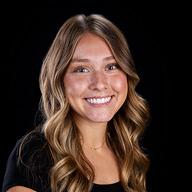
Rain Schenck is from Syracuse. She’s a senior at USU studying journalism and communications. If she’s not writing or reading, she can be found at any competitive event or game night, throwing a ball or yelling at a card game.











By Ella Stott STATESMAN REPORTER
Beauty. That is the word I would use to describe Hubbard Street Dance Chicago.
Their performance was at the Ellen Eccles Theatre on March 3, and it is a severe understatement to say I need to see these dancers again. I was blown away by their athleticism and artistry, and the show was entirely captivating and compelling from start to finish.
Hubbard Street Dance Chicago was formed in 1977 out of the Lou Conte Dance Studio at LaSalle and Hubbard Streets. Lou Conte gathered four dancers to perform in Chicago senior centers, and the group was born. Now, it is a force in contemporary dance, touring regularly — they’ve performed in 44 U.S. states and 19 countries — and showcasing their talent every season in Chicago.
The show in Logan was divided into three pieces, each about half an hour long. The first, “Echoes of Our Ancestors,” choreographed by Maria Torres, featured the whole company in an explorative blend of Caribbean Latin heritage and modernity.
It began with all of the dancers on stage, using their colorful costumes as a way to extend their bodies, move them across the stage and call upon ancestral ties. Two dancers wore breathtaking red skirts that highlighted their exquisite lines as they followed the different groups on stage and became a motif symbolizing paying homage to the past while embracing the future.
Throughout the piece, there were cuts from cultural musical odes to contemporary music and sound to portray how modernism can influence the way we experience and understand history. The music incorporated noises of cars,

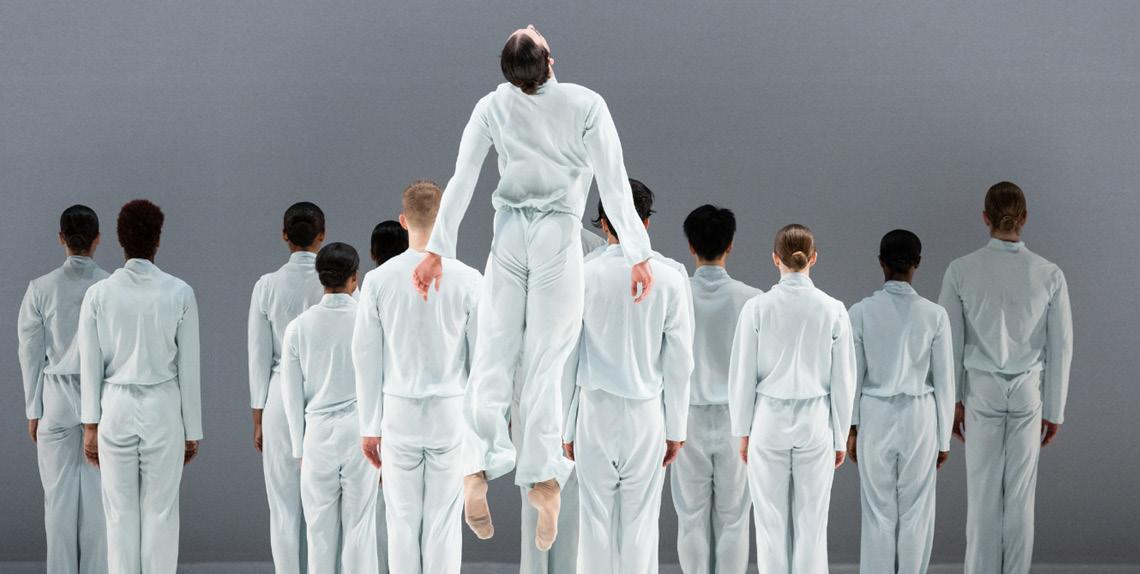
buses and trains as well as jazz and ballroom elements, showing the versatility among the dancers and how the past influences the present and future.
After a brief intermission, five dancers returned for the hauntingly poetic performance of “Into Being,” choreographed by Flock, a group made up of Alice Klock and Florian Lochner. In a sharp contrast to “Echoes of Our Ancestors,” the piece exhibited muted colors and spotlight lighting, focusing on diagonal lines and intricate partnerships. Standout soloist Alexandria Best flourished in this piece, working with each dancer and individually to demonstrate the intersection between the human body, emotion and connectivity.
The spotlight lighting on this stage stood out as a fresh and inspirational exploration of self. In one moment, a small pathway on the front of the stage was lit while the rest of the stage spotlit the dancers. One artist walked across the stage in a symbol of coming “Into Being.”
The final dance of the night was “return to patience,” choreographed by Aszure Barton and featuring the entire cast in a white-out costume and stage performance. Completely brightened by the dancers’ costumes, which were created by the Juilliard School in New York, and the white lighting and flooring, this piece highlighted the dangers of conformity and its apparent inevitability in modern society. With disturbingly perfect coordination and each breakout soloist returning to be one of the group, the team came together to produce a beautiful commentary on individualism and what happens when this is lost. At the end, one dancer was highlighted as they tried to emotionally escape this reality, but they again returned to the entire group behind them,
posed in creative and somehow also communal loss. This piece felt revolutionary and inspired, providing parallels to society that is increasingly focused on artificial intelligence and less on human beauty.
In this performance, I was reminded of that human beauty and how art will not be lost as long as there are those willing to dedicate themselves to it and people, like the engaged and astonished audience members, who will partake in it.
As someone who has been dancing since they were three, this performance rejuvenated my desire to explore how art and body can come together through movement and music. Watching Hubbard Street Dance Chicago was an experience nothing short of inspiring, relevant and absolutely breathtaking. I think I can speak for everyone in that audience when I say Logan will welcome them back anytime with open arms.
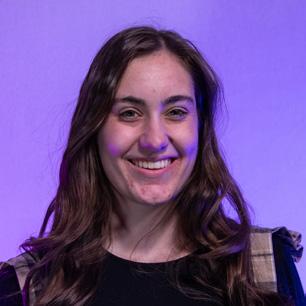
Ella Stott is a junior studying English. In her free time, she can be found playing “Mario Kart,” making a smoothie bowl or complaining that she actually doesn’t have any free time.

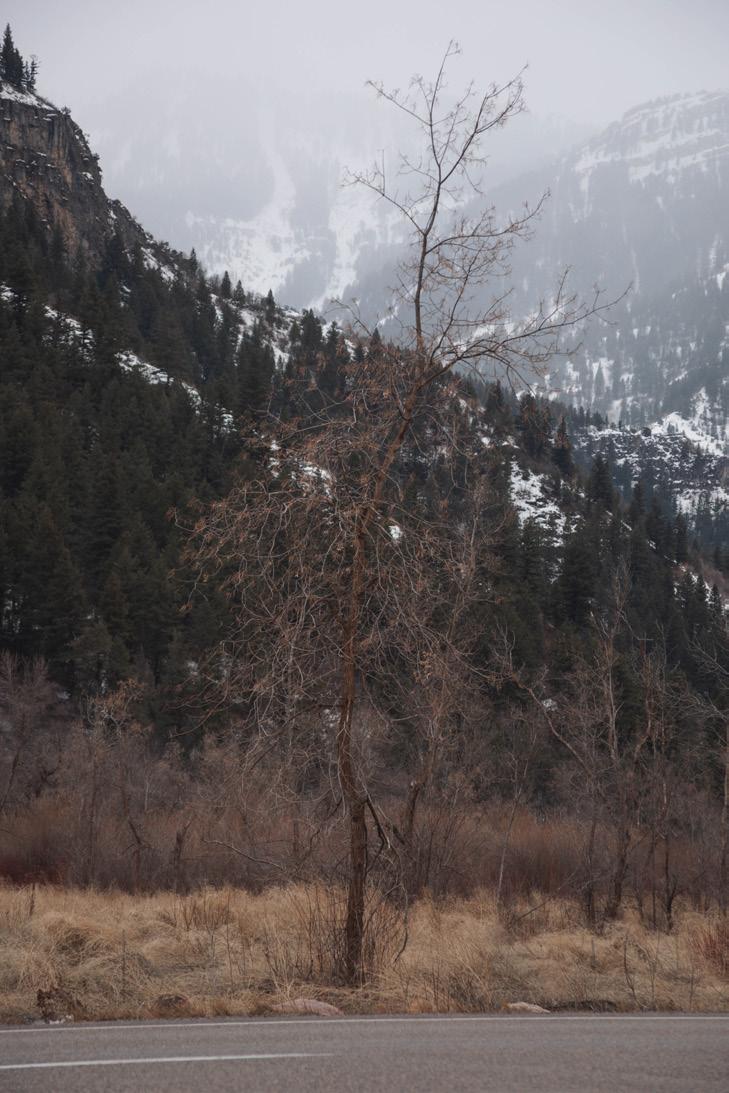
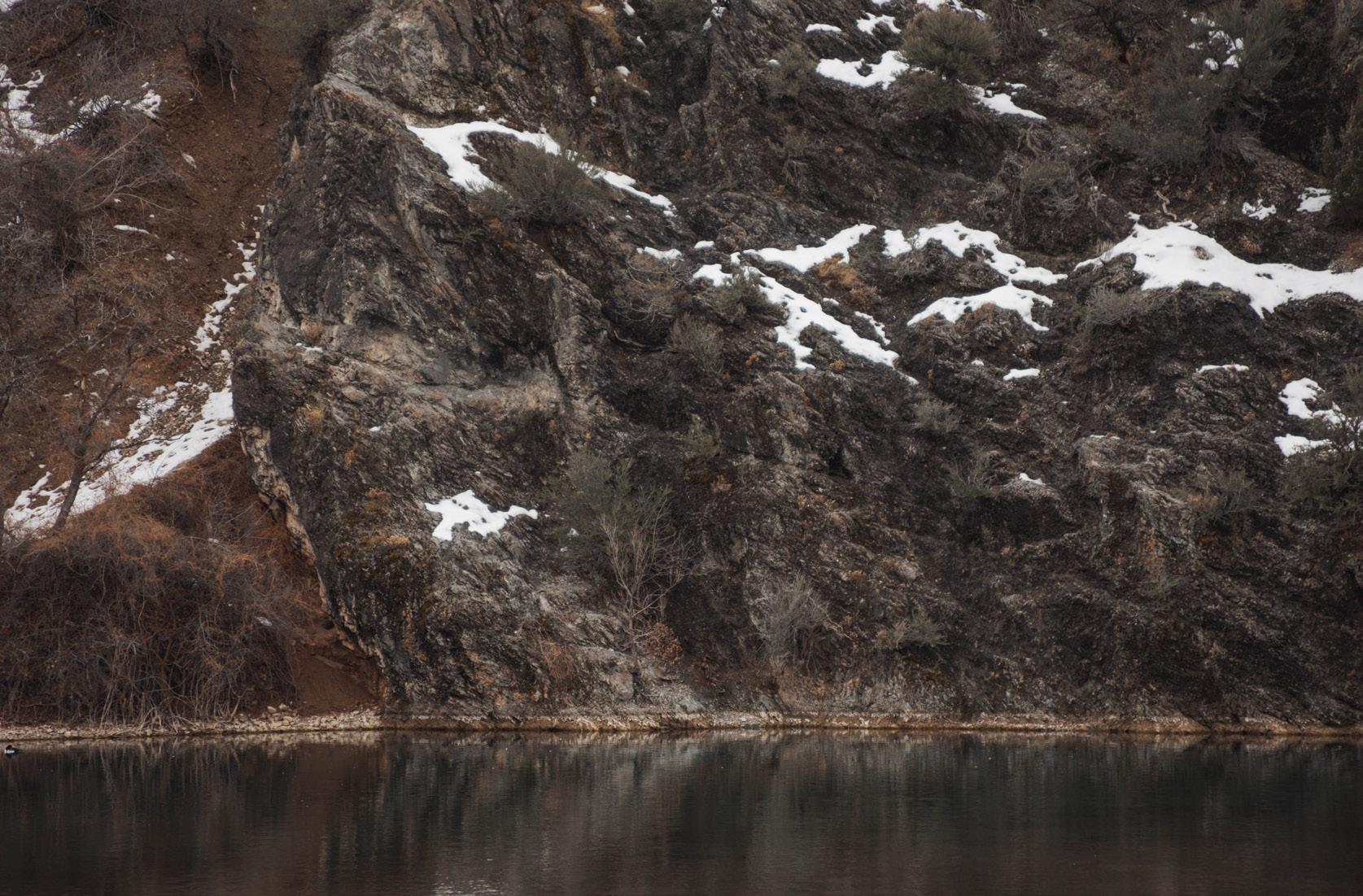

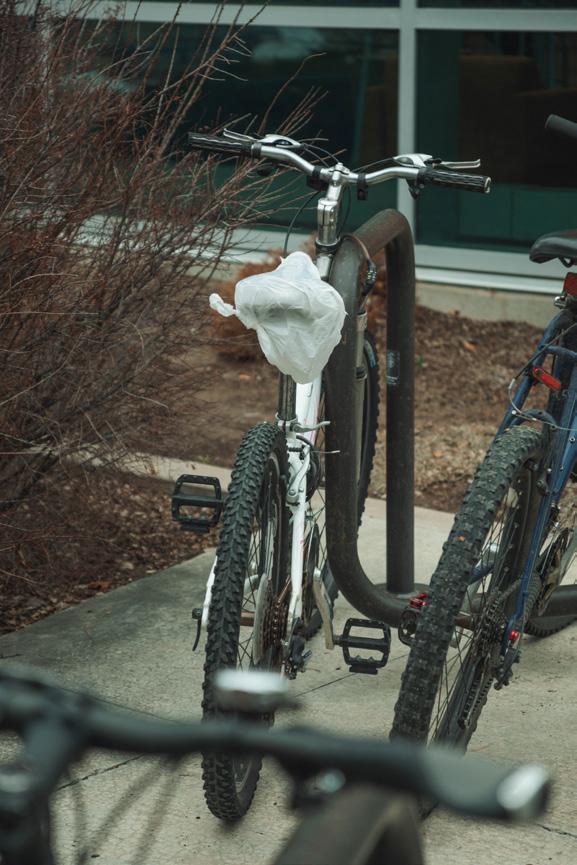



Hazel Harris is a sophomore at Utah State studying photography. Besides photography, she enjoys baking sourdough, crafting and other hobbies that typically belong to your grandmother. —






Nominate influential students, faculty and sta , alumni, and community members for the Utah Statesman’s 50 Influential Aggies!
Nominations will be accepted until April 14th. Scan to nominate